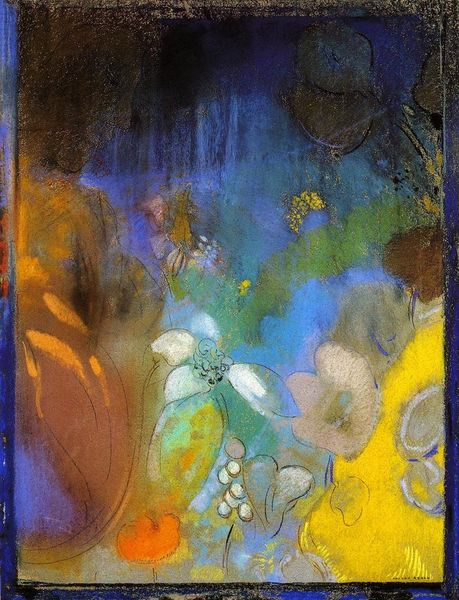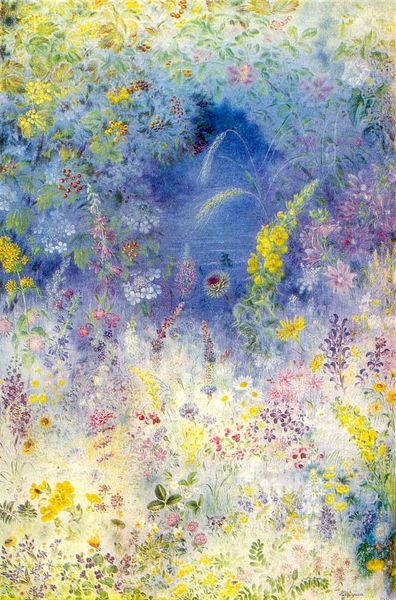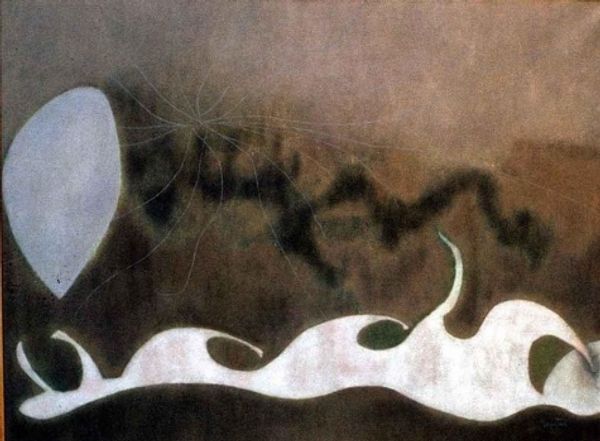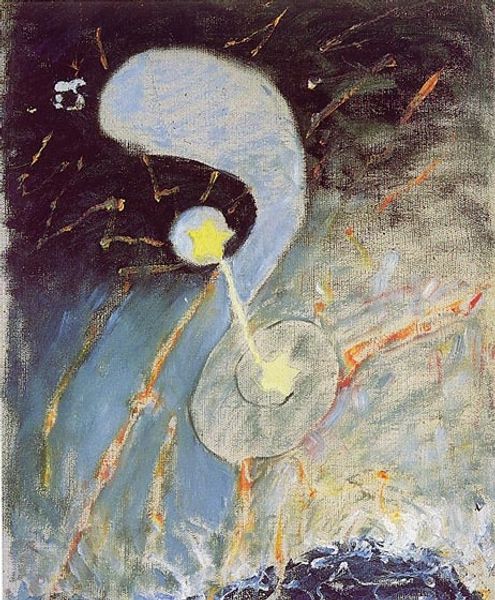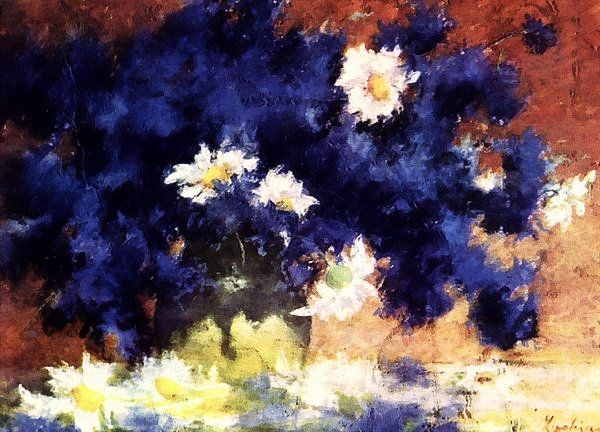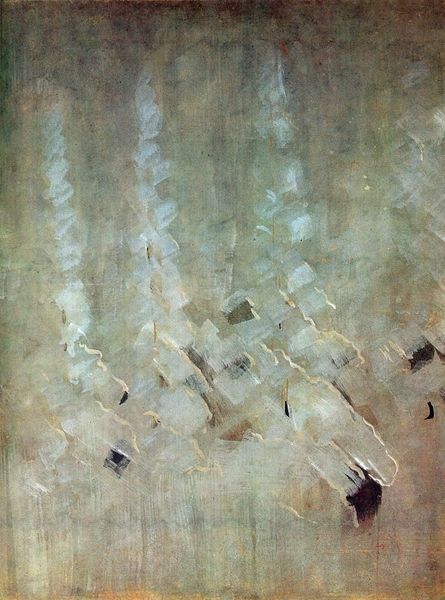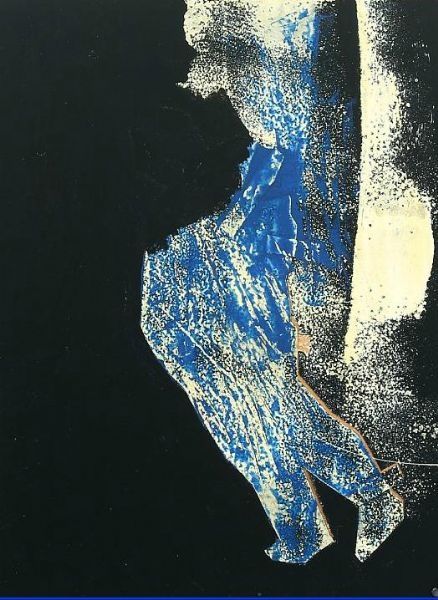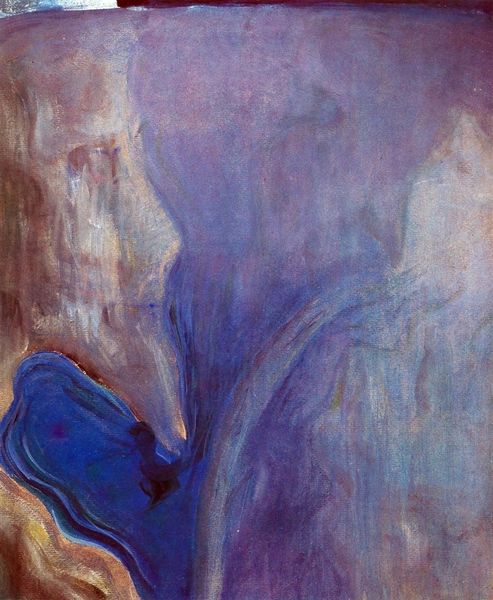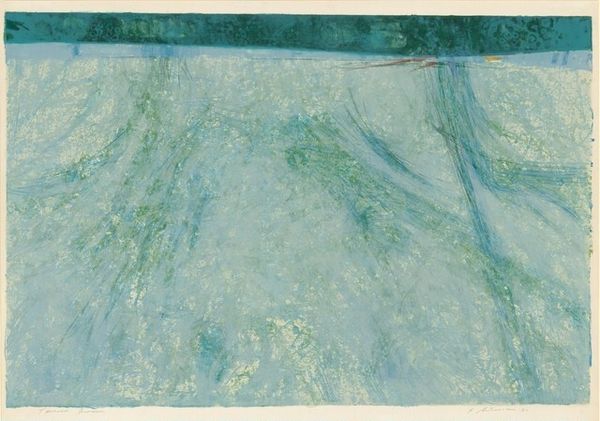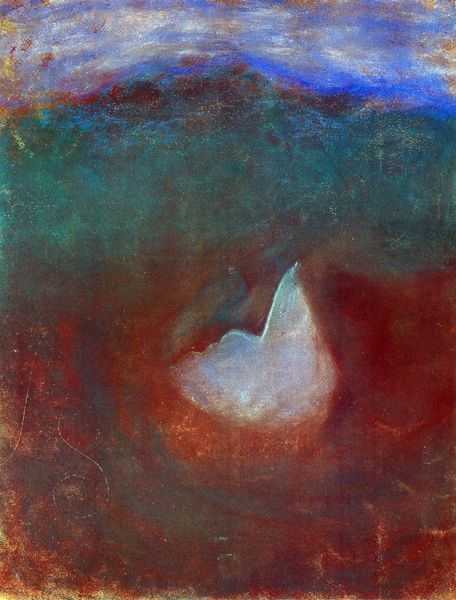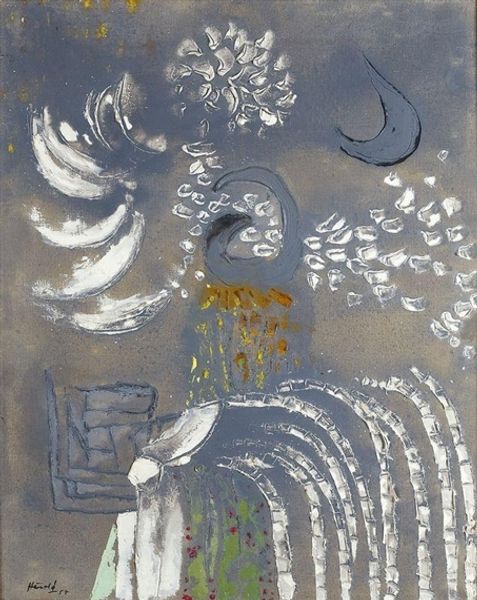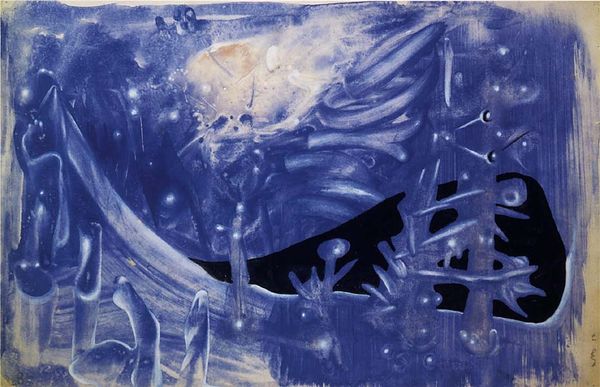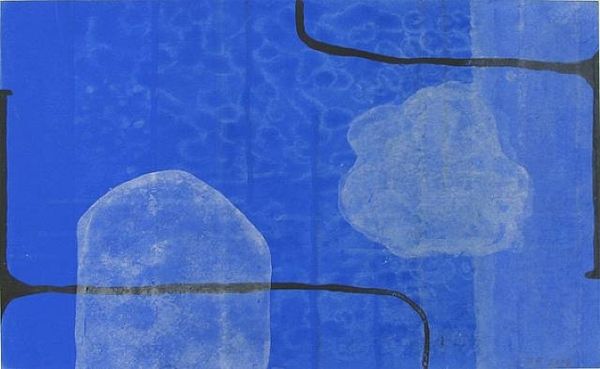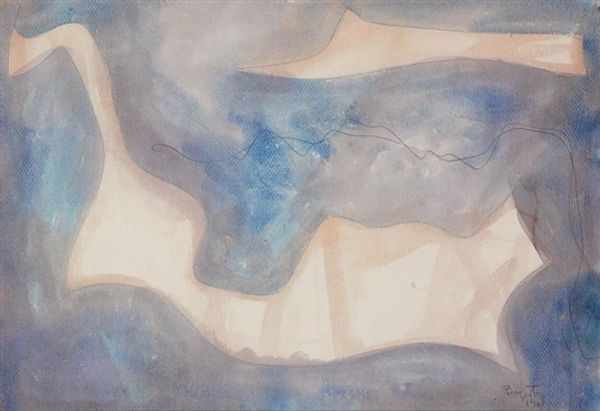
mixed-media, watercolor
#
abstract-expressionism
#
mixed-media
#
watercolor
#
geometric
#
abstraction
#
mixed media
#
watercolor
Copyright: Mordecai Ardon,Fair Use
Curator: Here we have Mordecai Ardon’s "Tammuz," a mixed-media work on canvas created in 1962. The color palette strikes me first—a mesmerizing symphony of blues. Editor: Indeed, it's a melancholic reverie. I immediately sense a somber, almost mournful atmosphere emanating from the canvas. The layered geometric shapes feel like fractured memories adrift in this cool-toned world. Curator: It's quite interesting how Ardon combines watercolor and other media, giving the painting a unique textured surface. This physicality connects to the symbolic weight of the piece. Editor: You're right, the textured surface emphasizes the painting's dreamlike quality. It resembles a figure and instrument merging into one, perhaps a deity from Babylonian lore embodying both destruction and renewal. The half moon is clearly symbolic. Curator: Perhaps. Tammuz was a Mesopotamian god associated with agriculture and fertility. We could look at the creation of "Tammuz," in 1962, when new approaches to watercolor were breaking conceptual ground, pushing abstraction in terms of materials available, particularly for mixed-media. Ardon’s process echoes those experiments, with layering, scraping, and manipulating different consistencies, making for dynamic surface textures. Editor: The cultural memory encoded here, though abstract, deeply resonates with ancient ideas. The muted blues amplify the feeling of lost myth, the celestial, or things hidden in the dark depths. Curator: I'm also compelled to consider the social context. Ardon’s background includes studying at the Bauhaus. In Bauhaus instruction the grid served to reconcile technology with craftsmanship. Editor: Precisely. That foundation makes "Tammuz" so thought-provoking. He’s channeling a much larger symbolic network, perhaps reminding us how cultural narratives—be they agricultural or technological—get etched into the art making. Curator: Ultimately, by uniting abstraction with tactile artistic treatment, Ardon creates more than simply an image. "Tammuz" embodies, on many layers, the essence of human resilience. Editor: Yes, "Tammuz" uses a striking combination of symbol, tone and hue, leading us on an introspective experience, provoking questions about mortality, art making, and lasting cultural echoes.
Comments
No comments
Be the first to comment and join the conversation on the ultimate creative platform.
